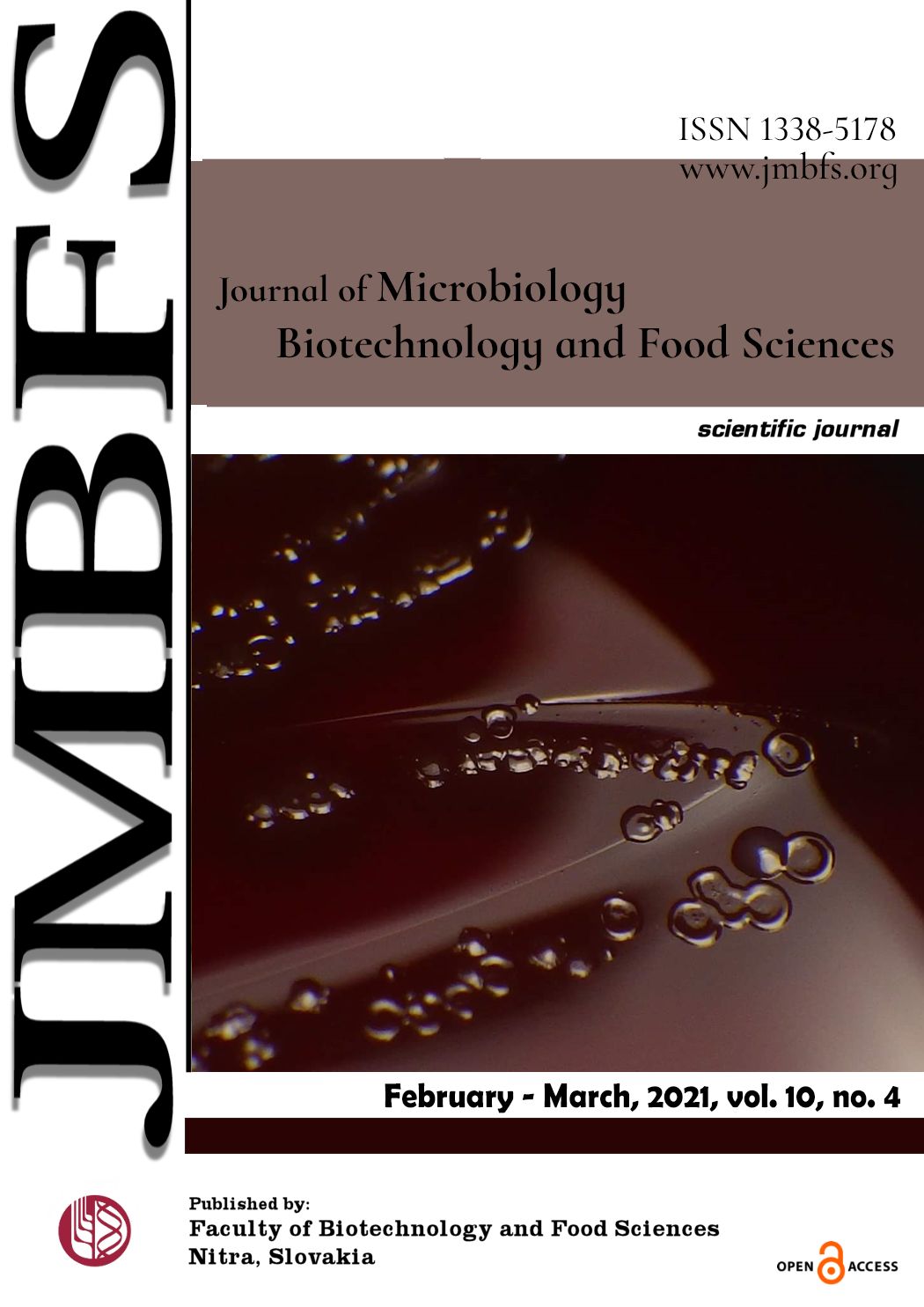HARNESSING THE NUTRITIONAL QUALITY OF PAWPAW AND PINEAPPLE FRUITS FOR PILOT SCALE PRODUCTION OF WINE
DOI:
https://doi.org/10.15414/jmbfs.2021.10.4.663-668Keywords:
Pawpaw-Pineapple Wine, Food Insecurity, Malnutrition, Fermentation, Nutrient, Pilot ScaleAbstract
Fermenting blended fruits has been observed to have positive cumulative health benefits. Pawpaw and Pineapple have well-known nutritive and health benefits. This study evaluated the role of fermentation on the nutritional and anti-nutritional compositions of pawpaw-pineapple juice blends using single and mixed starter cultures. Fermentation of pawpaw-pineapple juice blends in varying ratios: 1:1, 1:3 and 3:1 tagged Samples A, B, and C respectively was performed for five days after which the nutritional and anti-nutritional compositions were analyzed using standard methods. The findings revealed an increase in the concentration of all the proximate parameters except carbohydrate. The results also showed that sample A was better in nutritive quality than sample B and C by 8.55% and 3.92% respectively. The mono-cultural fermentation of sample A by Saccharomyces cerevisiae yielded the highest nutritional value (30.12%) as compared to mixed (25.35%) and single culture fermentation of Lactobacillus delbreukii (23.40%) and Leuconostoc mesenteroides (21.13%). The mineral composition of sample A (37.60%) with respect to organism was also observed to be significantly higher than sample B (28.82%) and C (33.58%). Overall, the single culture of S. cerevisiae gave the highest mineral output in all the blended ratios. The levels of the anti-nutrients were better reduced by a single culture of S. cerevisiae. Furthermore, the mono-cultural fermentation of sample A by S. cerevisiae produced the highest alcoholic content. Mono-cultural fermentation of pawpaw-pineapple juice in ratio 1:1 by S. cerevisiae is most efficient in obtaining the highest nutritional value and alcoholic content in pawpaw-pineapple wine.
Downloads
Downloads
Published
How to Cite
Issue
Section
License
Copyright (c) 2021 Olufemi Emmanuel Bankefa, Seye Julius Oladeji, Ruth Adefolakemi Gabriel-Ajobiewe, HAfiz Awofe Akinyele, Solomon Mayowa Samuel

This work is licensed under a Creative Commons Attribution 4.0 International License.
All papers published in the Journal of Microbiology, Biotechnology and Food Sciences are published under a CC-BY licence (CC-BY 4.0). Published materials can be shared (copy and redistribute the material in any medium or format) and adapted (remix, transform, and build upon the material for any purpose, even commercially) with specifying the author(s).





